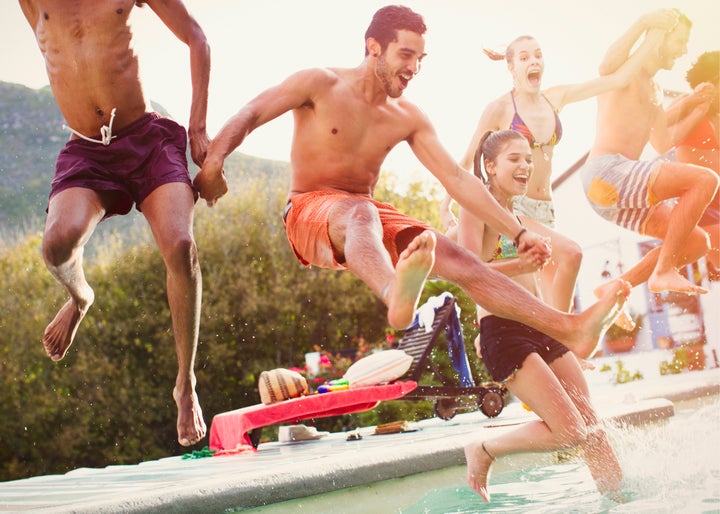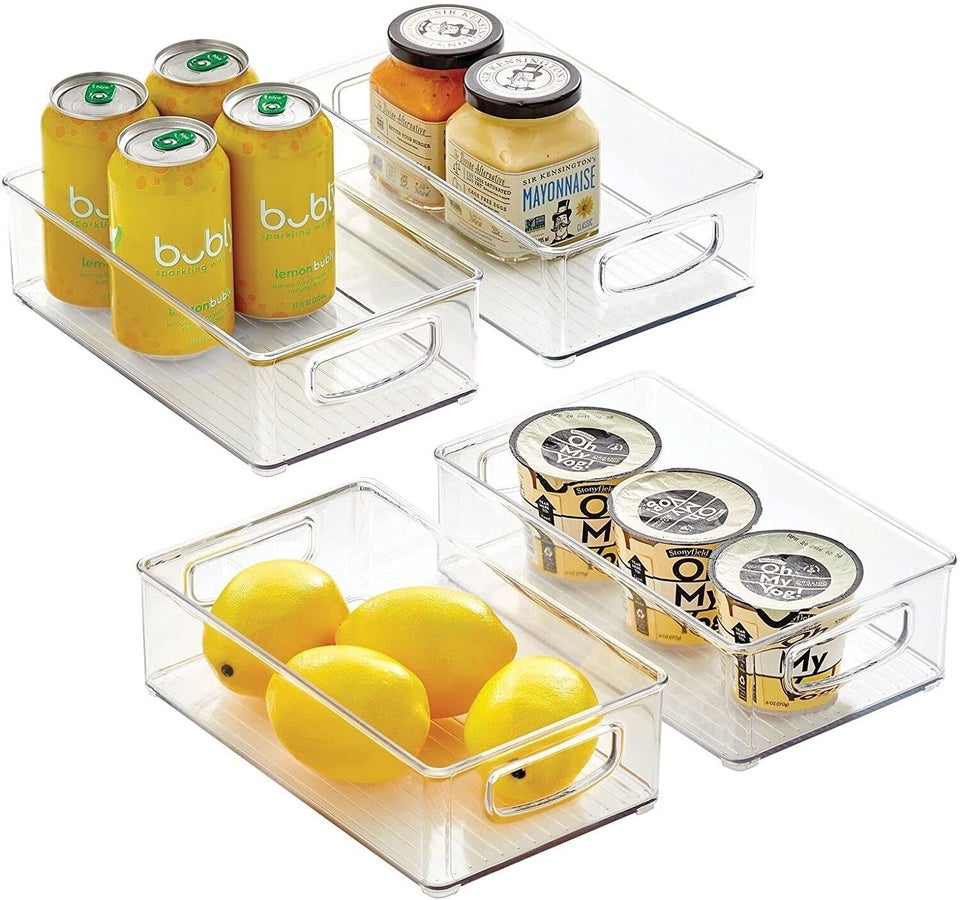
After chowing down on burgers, hot dogs and watermelon, the last thing that a kid (or an adult) at a poolside summer barbecue wants to hear is, “Wait a half-hour before you go in the pool!”
Many of us grew up with these words echoing in our ears at every pool party or beach blowout, but were our parents right to set a strict 30-minute buffer zone between lunchtime and swim time?
To get to the bottom of this very popular safety theory, we asked for input from people who would have the answers: emergency room physician Dr. Jim Keany of Providence Mission Hospital in Mission Viejo, California, and registered nurse and triathlon coach John Rhodes of Axes Performance Coaching.
The idea that you need to wait to swim after you eat is a myth based on a false understanding of bodily functions
We’ll start off by answering the big question regarding this topic: “There is no medical evidence that supports waiting at least 30 minutes after eating before swimming. There have been no cases or evidence suggesting that eating just before swimming led to someone drowning,” Keany said.
Keany explained that this myth first gained popularity due to a simple misconception of medical science. In the past, “it was assumed that because more blood was flowing to the stomach for digestion, less oxygen would flow to the arms and legs, which could lead to someone drowning.” However, Keany assures us that “your body supplies more than enough oxygen to your stomach, arms and legs when you are swimming.”
Eating before swimming could be a hazard if you’re planning to engage in heavy swim exercise
If you’re planning some light recreational swimming with friends after enjoying backyard barbecue fare, you’re not at major risk for heavy cramping. But if you’re a competitive swimmer in training or otherwise feel the urge to strenuously swim laps, Rhodes warns against starting right after you eat.
“Eating a big meal, then going for a hard swim workout, may lead to GI distress, like nausea or vomiting,” Rhodes said. Instead, save the Olympic-level swim training for another (less food-focused) occasion.
The same eating habits that might cause stomach discomfort on dry land can also lead to cramping in the water
When we asked Keany whether certain types of food are more likely to cause cramps than others, he told us that “studies consistently show that this isn’t the case. And, according to the American Red Cross, you don’t have to restrict certain foods before swimming.”
However, Keany does say that “any dietary indiscretions that might cause stomach upset without swimming could lead to the same issues that would cause cramping while swimming. Overeating [and consuming] excessively spicy or acidic foods can also cause stomach cramps even under normal circumstances, so it is wise to use your own judgment” when swimming after eating these foods.

Alcohol, on the other hand, can prove very dangerous (and even fatal) when combined with swimming
For adult guests at a weekend barbecue, crisp beers and frozen margs often make welcome pairings for beloved cookout dishes. Keany insists in no uncertain terms that alcohol and swimming do not go well together.
“Alcohol does play a significant role in swim safety,” he said. “In fact, drinking alcohol significantly increases the potential for drowning. This is because it impairs coordination, judgment, balance, response to cold and the ability to safely swim.”
Keany’s facts grow even darker when the topic of mortality rates comes up: “According to the Centers for Disease Control and Prevention, up to 70% of deaths associated with water recreation among adolescents and adults occurred when alcohol was involved. An adult can drown in only a minute, so being aware of the level of danger surrounding water and alcohol could save their life.”
There are several key signs that indicate when someone is too inebriated to safely swim. “[Look for] a loss of good decision-making and an increase in risk-taking, slurred speech or stumbling, and an increased body temperature (drinking causes your body to overheat, which can affect your ability to swim safely),” he said.
For the safest results, avoid swimming if you’ve consumed any alcohol. But if you or a friend are determined to get in the pool post-cocktail, be sure to have a sober buddy nearby. “Thirty-two percent of drowning deaths happen when someone is swimming alone, which is why it is important to swim with a friend,” he said. “If your friend or family member is determined to swim, do not leave them alone. If you think they might endanger their body or health, send someone to get help.”
More ways to keep your pool party as safe as possible
Avoid any and all glass servingware
People who attend pool parties often walk around with bare feet (or feet covered by flimsy flip-flops). For the safety of your guests’ toes and soles (and for the safety of your fancy glassware), “make sure to serve food on plastic plates and platters and provide guests with plastic [or paper] plates, plastic utensils and plastic cups to help people avoid stepping on broken glass,” Keany said. Shop some of our favorite shatterproof glassware here.
Keep a first-aid kit and a CPR-knowledgable adult near the pool
No one likes to consider the idea of a guest being injured at their pool party, but smart hosts are prepared for any possibility. “Keep a first-aid kit near the pool. Double check that you have plenty of bandages and disinfecting solution,” Keany said, adding, “Make sure that you or several guests at the party know CPR — it can save someone’s life!” Check out our top picks for first-aid kits here.
